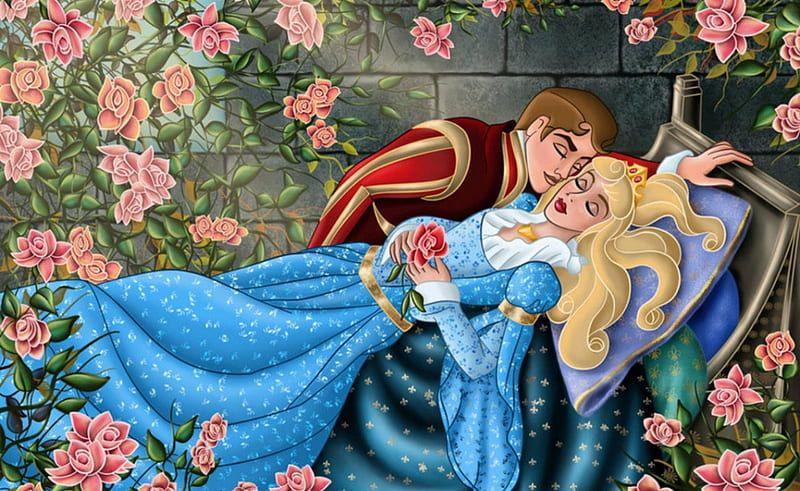In the absence of being the runaway thinking mind projects what is missing in symbolic terms. There is a ‘sting in the tail’ to this trick however and that ‘sting’ comes about as a result of the opacity of the symbols that we have been presented with – not only do we not know what the symbol is representing, we don’t even know that it is a symbol. Furthermore, the opaque or concrete nature of this ‘dishonest’ (or ‘misrepresentative’) symbol is twisted in such a way that the qualities of being are grotesquely parodied rather than being correctly represented or reflected. Reality itself (whatever thatmight be) is not being ‘respected’ in this process, we might say; we’re riding rough-shod over it.
Being is therefore represented to us in a parodic way – it is being represented as something ‘out there’ that we can catch scent of, give chase to, and – hopefully- successfully acquire. There is a deception being perpetrated here however because ‘projected being’ is by its very nature something we can never truly lay our hands upon. Being is represented to us by the thinking mind in terms of images and what could be more elusive and insubstantial than an image? How after all do we lay our hands upon an image? An image is of course telling us about something, it is giving us information about something so we always have it in our heads that there is this ‘something’ out there which it is possible for us to actually gain (we would have no interest in it otherwise). We are ‘assuming content’ in other words, and the assumed content is what makes the images so very attractive (or so very frightening, as the case may be). The point is that the ‘assumed content’ means that we aren’t actually relating to any actual content – we are relating to the image instead of the content, and is what breathes life into the image, so to speak. ‘Content’ and ‘being‘ are equivalent terms in this context and so what we are saying here is that the attractive or repulsive ‘magnetic power’ of images arises as a result of us assuming being, even though – if we were to stop and reflect on the matter – we would realise that we don’t have the faintest clue as to what it is that is being assumed! Our ‘intoxication’ with images is the very same thing as our alienation from being, in other words.
This brings us back therefore to what we started out by saying, which is that in the absence of being, the thinking mind presents us with what is missing (but not acknowledged to be missing) in symbolic terms, but in such a way that there is a major ‘sting in the tail’ that we will find out about later on. The ‘front or business end’ of the images that the mind presents us with are all very lively and all very exciting but behind all that frothy excitement there is this alienation, the alienation that comes from total disconnection with being (which is all there is). These images don’t speak of ‘alienation from being’, they speak of involvement with being, they speak of intimate engagement with being; the message we are getting is that a state of glorious being (or whatever we might want to call it) is just around the corner. We’re on the edge of our seats, we’re besides ourselves with excitement, but behind all of this excitement there is a desolation we cannot even begin to comprehend and this desolation / alienation is the ‘sting in the tail’ that we have been talking about. As far as stings go, this is the ultimate ‘bad buzz’. It doesn’t get any worse than this. Nothing can sting us worse than absolute alienation from reality.
In the absence of being the runaway mind presents us with a version of what is missing in symbolic terms, but these are ‘closed’ or ‘literal terms’ that don’t actually point us in the direction of reality at all, but rather which trap us in a kind of ‘hall of mirrors’. The symbol apparently ‘stands for’ something – this being the nature of symbols – but this is a bluff rather than being any kind of honest representation. As we have said, we are ‘assuming a content’ to the presented image, but ‘assuming a content’ merely means that we never have to check up to see if what we have assumed is actually true! We’ve disengaged from the content. What we’ve actually done here is that we have ‘tokenized’ reality; the tokens we are relating to in place of reality represent what is real in an opaque way – they work therefore by obscuring reality (or by ‘creating shadows’). The tokens are red herrings; they send us off in the wrong direction, a direction that is no direction at all and it is the very fact (as we have said) that our thinking – when it ‘takes over’ and starts ‘running the show,’ as it will – disconnects us from being (and diverts us instead into the hypnotic realm of promissory being) that fuels the illusion-machine, and gives it its power over us.
Something very strange happens as a result of us getting disconnected or disengaged from being and plugged into the illusion-machine instead – something so strange that it is all but impossible to get our heads around it. When we fall into the realm of opaque or misleading representations (as soon as we start believing uncritically in the output of the thinking mind so that our thoughts actually seem to be ‘true’) then we find ourselves in the position of relating on a full-time basis to a whole bunch of ‘token objects’ that we don’t know to be ‘token objects’. We don’t really ‘find ourselves’ in this position however – that’s just a figure of speech! We don’t find ourselves in this position because we are absolutely convinced that the token self isn’t a token but that it is – on the contrary – who we really are. We are equally convinced that the ‘token objects’ aren’t tokens either – to believe implicitly in the reality of the token self is also to believe implicitly in the reality of the token objects that this self spends all its time relating to. This is therefore an ‘invisible disconnection’ and this is what happens when we become immersed in the deceptive world of opaque or misrepresentative symbols. This is what happens when we become ‘an image in image world’, or ‘a thing in a world that is made up of other things’.
This is such a peculiar situation however; we don’t see it as being in any way peculiar (in fact it seems perfectly normal to us) but if were to look at it ‘from the outside’ (so to speak) then we would be utterly shocked and disturbed at what we see. What we see is a terrible parody: the token self (which has absolutely nothing to do with who we are) is completely engaged on a full-time basis with its token objects, which only have meaning to that token self, to that ‘token self which doesn’t exist’ (or, as we might also say, to that ‘token self which only exists in relation to its projected objects’). The relationship between ‘the false self’ and ‘the false self’s projections’ might be said to analogize the relationship between ‘who I really am’ and ‘what reality really is’, only it does so in terms of the relationship between a defined or fixed point and the tautological extensions of that point (which correspond to the finite objects that the finite self ‘believes’ in and which make up its world), and this isn’t actually a ‘relationship’ at all. It’s the relationship of one end of a child’s seesaw with the other end – when one end goes up then the other goes down, and vice versa. Closer examination shows however that this isn’t a ‘relationship’ (which needs two independent elements if we’re going to use that word) but just the one movement, just the one event – the positive displacement is being reflected back at us as a negative displacement and this means that what we’re talking about is a non-event, not an event. It’s a non-event disguised as an event.
This then is the ‘peculiar situation’ that we are drawing attention to – the fact that when we are identified with a fixed point and experience life on the basis of this fixed point (or ‘definite identity’) then everything that happens to us is a ‘non-event disguised as an event’. There’s no other way for this to be since the perspective of the defined or fixed identity only works in terms of opposites – everything we perceive and experience from the basis of the defined identity is our own ‘polar’ attitude reflected back at us and this means that we are forever trapped between POSITIVE and NEGATIVE. But if we’re forever trapped between plus and minus (between the positive displacement of one end of the seesaw and the negative displacement of the other end) then we’re trapped in an ongoing ‘non-happening’ because plus and minus (the simultaneous positive and the negative displacement of the two ends of the seesaw) are the two sides of the same self-cancelling event….






